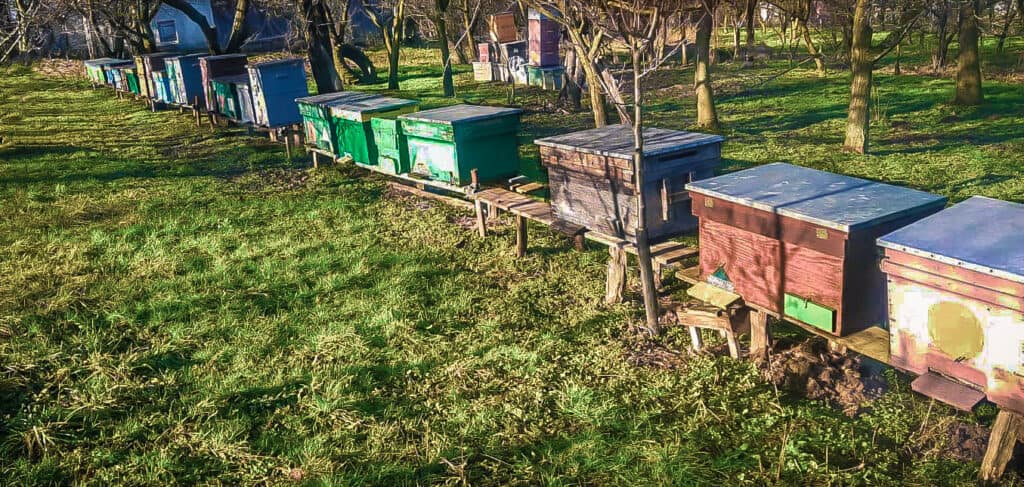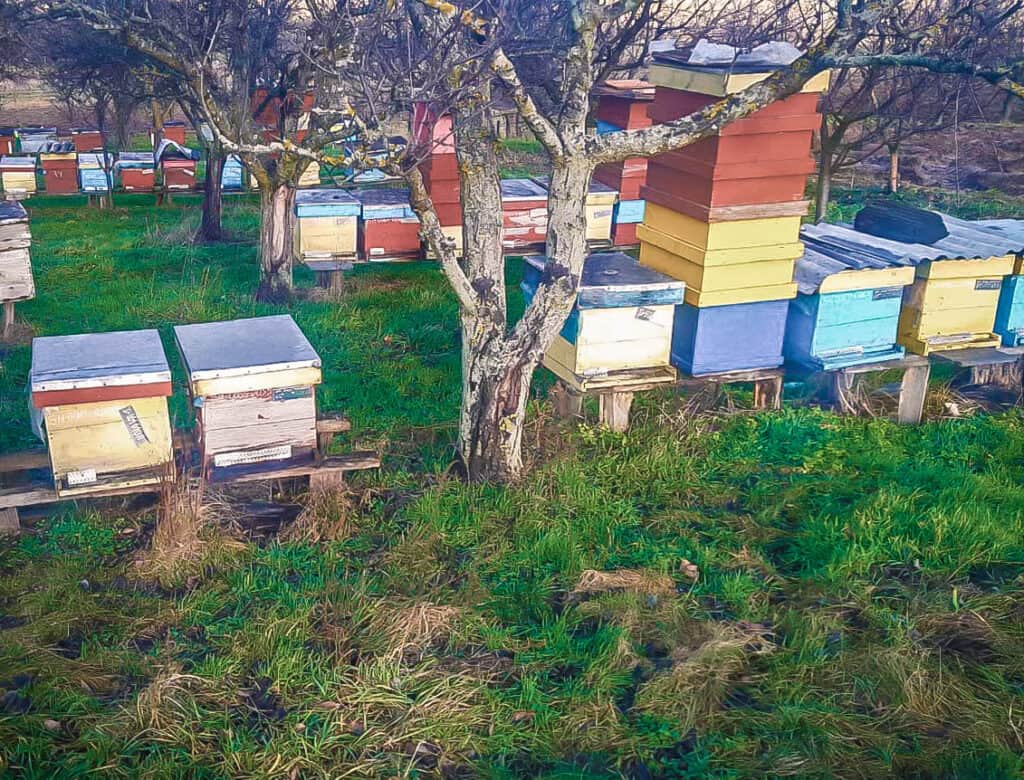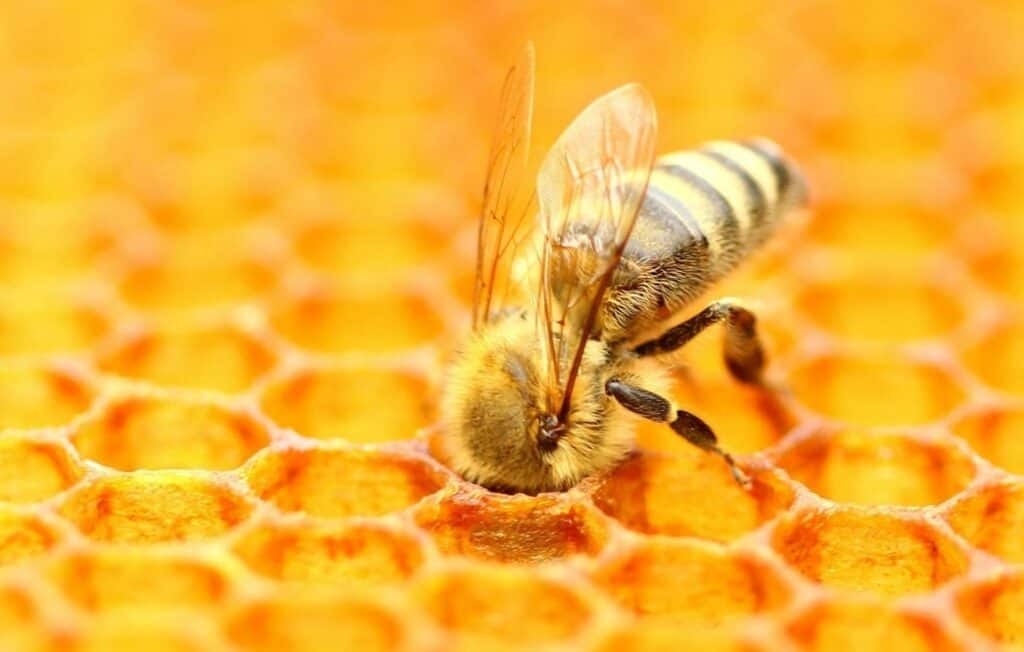In the last decade, we have experienced an increase in the publication of articles relating to catastrophic events that are reducing the world pollinators and of bees and related species. To grasp the importance of this topic and article we present a few:
“Bumblebees are dying across North America and Europe as the climate warms, scientists say“
– The Washington Post, 2020
“Last year, 40% of honey-bee colonies in the US have died“
– Business Insider, 2019
“Why have 500m bees died in Brazil in the past three months?“
– The Guardian, 2019
“A Sharp Spike in Honeybee Deaths Deepens a Worrisome Trend“
– New York Times, 2015
“Subtle poison“
– The Economist, 2012
These are just a few mentioned of unprecedented crisis it is about far more than a shortage of honey. Here are the 3 top reasons bees are dying:
1. Electromagnetic Fields
Mobile devices and in general those devices that have as a basic working principle electromagnetism fields or radiation are generally considered to represent a danger to bees. Over the past few years, there have been many studies referring to the negative effects of electromagnetic fields on animals and insects. Of particular relevance is the “Disturbing Honeybees’ Behaviour with Electromagnetic Waves: a Methodology” study by Dr Daniel Favre; a Biologist Private Researcher and Teacher.
Dr Daniel F. focused particularly on the Bees Behaviour when exposed to the standard 900 MHz of the Global System for Mobile Communications, Originally from Groupe Special Mobile or GSM.
According to (Favre D.2011) the study clearly show that the presence of actively communicating mobiles phone handsets in close vicinity of honeybees had a dramatic effect, namely the induction of worker piping which was regularly observed about 25 to 40 min after the onset of the mobile phone communication. This observation means that:
- Honeybees are sensitive to pulsed electromagnetic fields generated by the mobile telephones.
- Under these circumstances, observable changes in the behaviour of the bees are not artificial but can be proven to occur reproducibly.
In another study (Marin Manger & Mirta Tkalec, 2017) concluded that effects of RF-EMF at 900MHZ in honey bee larvae appeared only after exposure to certain EMF considerations which would not normally appear in nature.
In other words bees will keep away from areas with mobile phones and other electronical devices emitting Electromagnetic Fields.
MORE EM TECH = LESS BEES

Is that the reason why we don’t have that many bees in the city?
The answer is YES and NO. Bees will be in distress when exposed to EM Fields and will try to avoid them if possible; the main reason there are not that many bees in the cities is food. Bees need many flowers to survive and if they cannot find enough nectar, they will be subject to starvation.
Furthermore, without considering the polluting agents to which bees are exposed, there are many NEW CITY BEEKEEPERS that are inexperienced and often do more harm than good since bees end up having diseases that can be transmitted to other beekeeping activities outside the city.
2. Pesticides
Before proceeding with understanding the effect pesticides have on the reduction of the bee population, we will have a look at understanding their origin, development and use for human population.
According to Oxford Reference Dictionary (2021) pesticides are defined as:
“A chemical (such as an insecticide, fungicide, rodenticide, herbicide, or germicide) that is used to kill or control pests, such as insects, weeds, or micro‐organisms.”
According to J.Handley (2021) the practice of killing insects and other micro-organisms is as ancient as the Sumerians. Around 3200 the Ancient Chinese developed the first to develop Natural Insecticides from plants; they perfected their knowledge and ultimately became experts in biological control using nests of ants in citrus orchards to control caterpillars and large boring beetles.
Between the 1750 and the 1880 the European continent witnessed its agricultural revolution. Countries and institutions were investing much in the study of plant diseases and substances that would enhance crops.
DDT or dichloro-diphenyl-trichloroethane
“DDT was developed as the first of the modern synthetic insecticides in the 1940s. It was initially used with great effect to combat malaria, typhus, and the other insect-borne human diseases among both military and civilian populations.
It also was effective for insect control in crop and livestock production, institutions, homes, and gardens. DDT’s quick success as a pesticide and broad use in the United States and other countries led to the development of resistance by many insect pest species.
In 1972, EPA issued a cancellation order for DDT based on its adverse environmental effects, such as those to wildlife, as well as its potential human health risks. Since then, studies have continued, and a relationship between DDT exposure and reproductive effects in humans is suspected, based on studies in animals.
In addition, some animals exposed to DDT in studies developed liver tumors. As a result, today, DDT is classified as a probable human carcinogen by U.S. and international authorities.
DDT is:
- known to be very persistent in the environment,
- will accumulate in fatty tissues, and
- can travel long distances in the upper atmosphere.”
(DDT – A Brief History and Status | US EPA, 2021)
The WHO (Pesticide residues in food, 2021) Identified some very important key facts about Pesticides:
- Pesticides are used to protect crops against insects, weeds, fungi and other pests.
- Pesticides are potentially toxic to humans and can have both acute and chronic health effects, depending on the quantity and ways in which a person is exposed.
- Some of the older, cheaper pesticides can remain for years in soil and water. These chemicals have been banned from agricultural use in developed countries, but they are still used in many developing countries.
- People who face the greatest health risks from exposure to pesticides are those who come into contact with them at work, in their home or garden.
- Pesticides play a significant role in food production. They protect or increase yields and the number of times per year a crop can be grown on the same land. This is particularly important in countries that face food shortages.
- To protect food consumers from adverse effects of pesticides, WHO reviews evidence and develops internationally-accepted maximum residue limits.
It is necessary to understand these facts about Pesticides and get a generic understanding of their importance but also of their risk, not only to the surrounding environment but also to our health. We use it to increase food production while slowly poisoning it.
What have bees to do with any of this?
According to (Francisco S-B. and Dave G. Are bee diseases linked to pesticides? — A brief review ,2016) insecticides can directly kill these vital insects, whereas herbicides reduce the diversity of their food resources, thus indirectly affecting their survival and reproduction. At sub-lethal level (< LD50), neurotoxic insecticide molecules are known to influence the cognitive abilities of bees, impairing their performance and ultimately impacting on the viability of the colonies. In addition, widespread systemic insecticides appear to have introduced indirect side effects on both honey bees and wild bumblebees, by deeply affecting their health.
Immune suppression of the natural defences by neonicotinoid and phenyl-pyrazole (fipronil) insecticides opens the way to parasite infections and viral diseases, fostering their spread among individuals and among bee colonies at higher rates than under conditions of no exposure to such insecticides.
Also worthy of mention is the fact that pesticides can be found in all water sources not only on the plants or small areas explored by bees. (Claydon, 2021)
According to (Hill, 2017) water pollution is dangerous since it can “contaminate human drinking water and irrigation supplies, can load the food chain with bioaccumulated toxins, and can carry disease”.
These facts are alarming since crops are being planted and harvested on the same soil every year.
THERE IS STILL HOPE! The European Food Safety Authority (EFSA) has found that certain neonicotinoids pose unacceptable risk to bees.
In April 2018 the EU banned the use of the most dangerous pesticides. Can this be enough?
According to (The Guardian, 2021) following lobbying from the National Farmers’ Union (NFU) and British Sugar, a product containing the neonicotinoid thiamethoxam was sanctioned for emergency use on sugar beet seeds this year because of the threat posed by a virus.
CONSUME MORE HONEY = BEEKEEPERS ACTIVITIES THRIVE = MORE BEES AND BETTER ECOSYSTEM
Alternativley
CONSUME MORE SUGAR = MORE PESTICIDES = BEES DIE, AND ECOSYSTEM (not only bees) GETS POISONED

3. Overwintering and Climate Change
According to (Favre 2011) 39% of bees die for Overwintering every year. During the Summer bees make their best to produce and stock enough honey to survive a hard winter. Towards the end of the summer and start of fall bees start reducing the numbers of youngsters as they would not be able to be of any use during winter months. Temperatures are low and there are no flowers to provide food so the new-borns would be only mouths to feed.
Very interesting fact is that the male bees called “Drones” get thrown out of the hive since they are effectively “USELESS”. If bees hive temperature decreases to much, bees will die. If they do not have enough honey reserves, they will die. Beekeepers have to be very responsible in their activity and it’s very important not to open the hives in the cold winter days as they will literally get a cold and probably die.
Climate change is affecting European Producers of Honey
In a recent visit to our honey suppliers, I had the opportunity to speak with many other local beekeepers regarding an alarming event.
In 2018, winter came very late and because of the favourable weather hives already have combs full of larvae for a new generation of working bees.
The problem is that winter eventually came and those young bees did not have where to go and collect food. The hives then met spring with weakened families and not enough strength to raise another new generation.
From the conversations, I had with local producers in Transylvania, most lost up to 30% of their hives by next spring.

TEMPERATURE RISE OF 1.5 °C
According to (Kerr et al., 2021) one of the many effects of global warming is the Bees Population Migration towards the northern countries. Furthermore “Unlike many other insects, bumblebees are especially sensitive to temperature. Their large, hair-covered bodies give them an ability to internally heat up by flapping their wings at different speeds. But that also makes them vulnerable in hot weather.” (The Washington Post, 2021)
A rise in temperature of 1.5 °C will have drastic consequences on the ecosystem causing many honeybee food sources to disappear. Seasons are changing and becoming more aggressive with the WWF reporting that 1 every 5 years countries worldwide will start experiencing EXTREME heatwaves; some already have.
If you would like to know more about the effects of Climate Change, Visit the Intergovernmental Panel on Climate Change website.
Bees and beekeepers need our help!
One direct way to help is to consume more honey rather than sugar helping to stop the decline of the bee population.
Marinko Vilić, Ivana Tlak Gajger , Perica Tucak, Anamaria Štambuk , Maja Šrut , Göran Klobučar , Krešimir Malarić , Ivona Žura Žaja, Ana Pavelić , Marin Manger & Mirta Tkalec (2017) Effects of short-term exposure to mobile phone radiofrequency (900 MHz) on the oxidative response and genotoxicity in honey bee larvae, Journal of Apicultural Research, 56:4, 430-438, DOI: 10.1080/00218839.2017.1329798
Claydon, S., 2021. Pesticides in our Environment – Pesticide Action Network UK. [online] Pesticide Action Network UK. Available at: <https://www.pan-uk.org/our-environment/> [Accessed 4 March 2021].
“pesticide.” Oxford Reference. . . Date of access 4 Mar. 2021, https://www.oxfordreference.com/view/10.1093/oi/authority.20110803100319678
Handley, J., 2021. Pesticides – A brief history and analysis | Pitchcare. [online] Pitchcare.com. Available at: <https://www.pitchcare.com/news-media/pesticides-a-brief-history-and-analysis.html> [Accessed 4 March 2021].
US EPA. 2021. DDT – A Brief History and Status | US EPA. [online] Available at: <https://www.epa.gov/ingredients-used-pesticide-products/ddt-brief-history-and-status> [Accessed 4 March 2021].
The Washington Post. 2021. [online] Available at: <https://www.washingtonpost.com/climate-environment/2020/02/06/bumblebees-are-vanishing-scientists-blame-climate-change/> [Accessed 4 March 2021].
Who.int. 2021. Pesticide residues in food. [online] Available at: <https://www.who.int/news-room/fact-sheets/detail/pesticide-residues-in-food> [Accessed 4 March 2021].
Francisco Sánchez-Bayo, Dave Goulson, Francesco Pennacchio, Francesco Nazzi, Koichi Goka, Nicolas Desneux, Are bee diseases linked to pesticides? — A brief review, Environment International,Volumes 89–90,2016,Pages 7-11,ISSN 0160-4120, https://doi.org/10.1016/j.envint.2016.01.009. (https://www.sciencedirect.com/science/article/pii/S0160412016300095)
Hill, P., 2017. Environmental protection. New York: Oxford University Press, p.p.48.
the Guardian. 2021. Government breaks promise to maintain ban on bee-harming pesticide. [online] Available at: <https://www.theguardian.com/environment/2021/jan/09/pesticide-believed-kill-bees-authorised-use-england-eu-farmers> [Accessed 4 March 2021].
Business Insider. 2021. Last year, 40% of honey-bee colonies in the US died. But bees aren’t the only insects disappearing in unprecedented numbers.. [online] Available at: <https://www.businessinsider.com/insects-dying-off-sign-of-6th-mass-extinction-2019-2?> [Accessed 4 March 2021].
the Guardian. 2021. Why have 500 million bees died in Brazil in the past three months? | Thor Hanson. [online] Available at: <https://www.theguardian.com/commentisfree/2019/aug/29/500-million-bees-brazil-three-months> [Accessed 4 March 2021].
The Economist. 2021. Subtle poison. [online] Available at: <https://www.economist.com/science-and-technology/2012/03/31/subtle-poison?frsc=dg> [Accessed 4 March 2021].
Nytimes.com. 2021. A Sharp Spike in Honeybee Deaths Deepens a Worrisome Trend (Published 2015). [online] Available at: <https://www.nytimes.com/2015/05/14/us/honeybees-mysterious-die-off-appears-to-worsen.html> [Accessed 4 March 2021].
Kerr, J., Pindar, A., Galpern, P., Packer, L., Potts, S., Roberts, S., Rasmont, P., Schweiger, O., Colla, S., Richardson, L., Wagner, D., Gall, L., Sikes, D. and Pantoja, A., 2021. Climate change impacts on bumblebees converge across continents.
PerfectBee. 2021. An Introduction to Overwintering Honey Bees – PerfectBee. [online] Available at: <https://www.perfectbee.com/a-healthy-beehive/inspecting-your-hive/overwintering-honey-bees> [Accessed 4 March 2021].

